
CSA Week 9 - Summertime Immersion
News
Expected Harvest
U-pick Uptick
by Farmer Dana
U-pick Uptick
by Farmer Dana
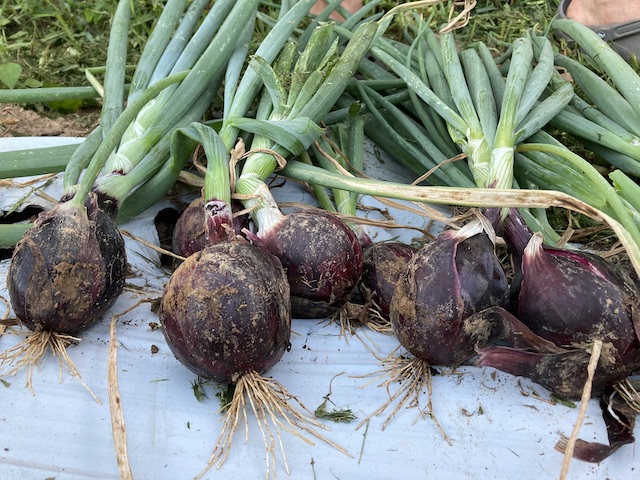
Red onions!
Harvest #9 (Week A) should include beets, carrots, garlic, fennel, zucchini, green peppers, swiss chard, lettuce, herbs, eggplant, italian dandelion, tomatoes, fresh onions, and scallions. Some items will be a choice. U-pick should include a handful of herbs, green/string/snap beans, cherry tomatoes, tomatillos, and flowers.
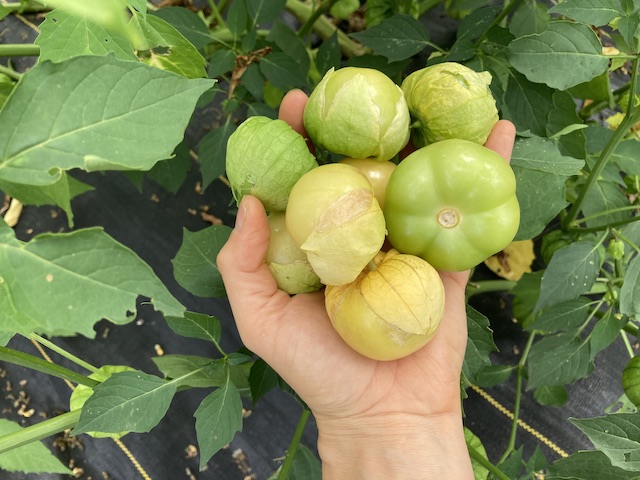
Ripe tomatillos fill out and split open their enveloping husk.

Notes From The Field
Farming It Is
by Farmer Derek
Farming It Is
by Farmer Derek
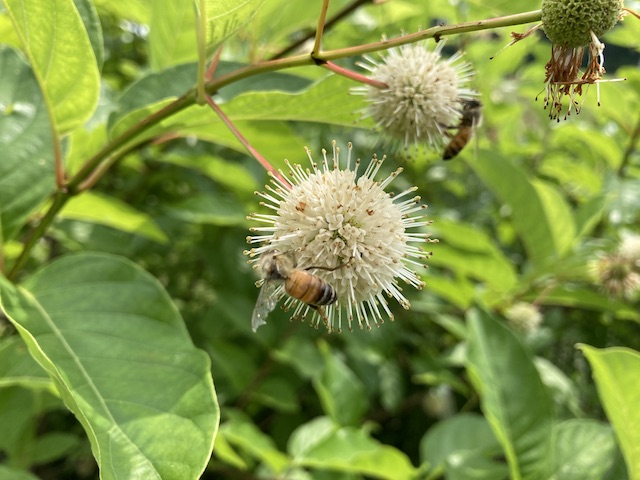
Honeybees on buttonbush blossoms.
Fifteen years farming full-time and I still forget how challenging (and/or frustrating) it is to grow produce during a dry spell in the heat of summer. But then, just like that, some unexpected rain falls overnight, barely audible over the drone of the box fan in the window, puddles on the driveway are woken up to, and the magical gift of rain is given and a brief feeling of contentment returns. Three-tenths of an inch last night should be enough to staunch the outgoing life-force-flow from the 6,100 broccoli, cabbage, and cauliflower plants that went in 3,500' of beds last Tuesday, preceding the disappearing act of dissipated forecasted rain that night. The subsequent four bright sunshine 90 degree days fully tested their resolve and our skill at transplanting successfully while making it apparent that transplanting with the water-wheel transplanter is essential. Stress test indeed.
Rejoice! Sixty percent of the onions were harvested on Friday by a CSA workshift and the farm crew, all of them red and of intermediate day length sensitivity, meaning they began bulbing when day length reached 14 hours or so, sometime in early/mid June. They are some of the nicest onions we've grown and we're excited to share them with you. We bypass some of the fancy curing process for onions and instead simply trim the tops about an inch above the bulb when some of the tops begin falling over and the onions begin to have the papery skin on the outside. They go right into our dry and cool storage room where they will continue to dry and cure somewhat. These aren't meant for longterm storage. The other 40% of onions are a long-day variety, meaning they don't begin to bulb until day length reaches 14-16 hours, and thus mature later. I think we've narrowed down our onions to two good and reliable varieties. Growing only two varieties instead of five makes staying on top of harvesting at the right time a bit easier. Enjoy!
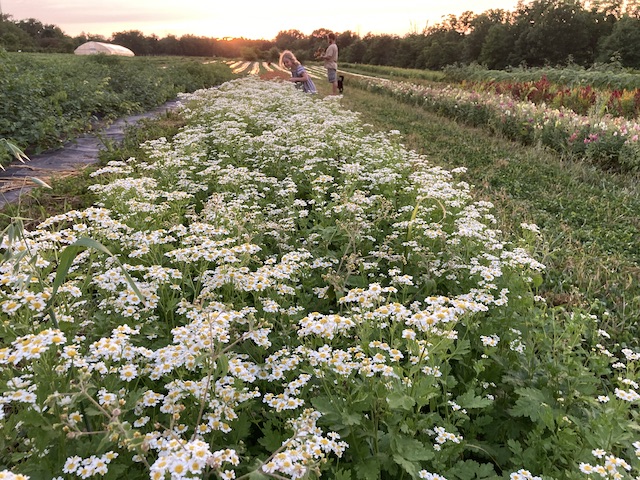
Collecting flowers while the sun sets.

Workshifts for Week of 7/18/22
by Farmer Derek
by Farmer Derek
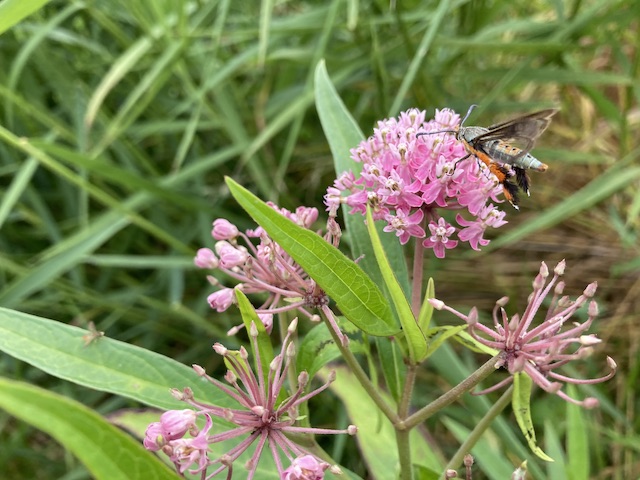
A beautiful insect on a beautiful plant, swamp milkweed. Let us know if you can ID the critter.
This week's workshift schedule
- Tuesday 7/19 8-10am
- Wednesday 7/20 8-10am
- Friday 7/22 8-10am
- Sunday 7/24 7-9am (early bird special!)
Bring gloves, water, a hat, sturdy shoes, and a pad for kneeling (if necessary for you)!
We meet under the large red maple at the end of the barn by the pick up room.

Herb of the Week: Calendula
By Gia Yaccarino
By Gia Yaccarino
While doing yardwork last weekend, I came in contact with some poison ivy and by Tuesday a rash was developing on my forearms.
What a perfect reason to try this week’s herb, Calendula, as a topical remedy!
I placed the flowers in a pint mason jar (about halfway loosely filled with fresh flowers), poured simmering water over the flowers, and covered.
Once it cooled, I dipped a cloth in the tea and applied as a compress. (Confession: While I was waiting for it to infuse and cool, I picked one of the flowerheads out of the water and rubbed that on my poison ivy rash. It was immediately soothing!)
Another idea is making ice cubes with the tea and rubbing the ice cube on the rash (I have yet to try that!).
Calendula (Calendula officinalis, Asteraceae)
Benefits
- Anti-inflammatory
- Stimulating the lymphatic system
- Topically for rashes
- Vulnerary (promotes wound healing)
- Antibacterial
- Antifungal
Uses
- Petals can be used in salads, egg dishes, salsa
- Flower heads can be frozen in ice cubes
- Calendula tea can be used
- topically for rashes/skin irritations
- gargle for a sore throat
- mouth rinse for inflamed gums
Safe for cats: Yes
Safe for dogs: Yes
Cautions
- Use with caution if pregnant
- This part of the aster family so for those who are reactive to ragweed (Ambrosia spp.) and chamomile (Matricaria recutita), use with caution


